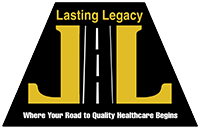Adults with developmental disabilities are living longer, healthier lives than ever before, creating new opportunities and challenges for support systems. Understanding how aging affects individuals with developmental disabilities helps families and communities provide appropriate, dignified care. Understanding Unique Aging Challenges People with developmental disabilities are living longer, healthier lives than ever before as a result …
Adults with developmental disabilities are living longer, healthier lives than ever before, creating new opportunities and challenges for support systems. Understanding how aging affects individuals with developmental disabilities helps families and communities provide appropriate, dignified care.
Understanding Unique Aging Challenges
People with developmental disabilities are living longer, healthier lives than ever before as a result of improved medical care, as well as the improved quality of life that comes from living in community rather than in institutions. However, aging can look and feel different for someone with a developmental disability.
Aging-related challenges may happen earlier than for other people, requiring families and support networks to plan for changes in supports and services. The combined experience of age and disability can result in extra discrimination or isolation, making community support even more critical.
Unique Aging Considerations:
- Earlier onset of age-related health changes
- Increased vulnerability to discrimination
- Greater need for support service coordination
- Potential loss of primary caregivers
Real-World Success Stories
Consider David’s story. At 58, David has Down syndrome and has lived independently with support for fifteen years. As he began experiencing mobility challenges and memory changes, his support team worked together to modify his living environment and adjust his care plan.
Rather than moving David to a care facility, his team installed grab bars, arranged for meal delivery services, and increased his support worker hours. David continues living in his chosen community while receiving the additional support he needs for successful aging.
Community Living Principles
Aging in community means staying, as much as possible, in the community, even though support needs may change. This approach ensures access to the same supports, services and opportunities as other aging people in the community who do not have a developmental disability.
Community living becomes particularly important for people with developmental disabilities due to the legacy of institutionalization. Many people lived in institutions earlier in their lives and experienced the loss of self-determination, personal choice, and community connection.
Community Living Benefits:
- Maintained social connections and relationships
- Continued access to familiar services and supports
- Preservation of personal choice and self-determination
- Integration with broader community aging services
Home Modification and Safety
Staying in his own home can sometimes be a matter of simple changes, such as replacing doorknobs with handles, getting furniture that is easy to get in and out of, or clearing away scatter rugs or other tripping hazards. If things need replacing soon anyway, think about replacements that will support accessibility.
Occupational therapists can often help with home modification planning. These professionals understand how to adapt living spaces to accommodate changing physical abilities while maintaining independence and safety.
Common Home Modifications:
- Bathroom safety equipment and grab bars
- Accessible furniture and lighting improvements
- Elimination of tripping hazards
- Kitchen adaptations for easier meal preparation
Healthcare Coordination
More regular doctor’s visits may be a good idea, and finding a family doctor is important if the person does not have one. It is also important for people to have a dentist and have regular dental check-ups because dental changes may occur for people as they age.
Screening tests for conditions such as high blood pressure, cancer and diabetes are also helpful. Perhaps consider a referral to a geriatrician – a doctor who specialises in treating seniors with multiple conditions.
Healthcare Planning Elements:
- Established relationships with primary care physicians
- Regular dental and vision care
- Age-appropriate screening and preventive care
- Coordination between specialists and support teams
Community Health Services Integration
Communities often have seniors’ health services for all aging adults – such as fall prevention clinics. There is also Home and Community Care and Health Services for Community Living through regional health authorities that may assist with planning around physical changes.
These services may provide nursing, occupational therapy, nutrition, dental hygiene, and mobile labs for individuals needing help managing diseases or wounds. They may also suggest fitness programs and advocate with specialist healthcare providers.
Available Community Services:
- Fall prevention and safety programs
- Nutrition counseling and meal planning
- Mobile healthcare services
- Fitness and wellness programs for seniors
Transportation and Mobility Support
Changes in mobility can affect not only how someone gets around in their own home, but also in the community and on the bus. Services such as HandyDart can be accessed to maintain community participation and independence.
Transportation becomes crucial for maintaining social connections, accessing healthcare, and participating in community activities. Planning for transportation needs should begin before mobility changes become severe.
Transportation Options:
- Specialized transit services for individuals with disabilities
- Community volunteer driver programs
- Modified public transportation access
- Family and friend support networks
Support Network Development
Networks of support are key to successful aging with developmental disabilities. These networks typically include family members, friends, support workers, healthcare providers, and community organizations working together to ensure comprehensive care.
Effective support networks require coordination and communication between all participants. Regular meetings and care planning sessions help ensure everyone understands their roles and responsibilities.
Support Network Components:
- Family members and chosen family
- Professional support workers and case managers
- Healthcare providers and specialists
- Community organizations and volunteer groups
Planning for Caregiver Transitions
A parent or other caregiver may not be able to provide support anymore, making succession planning essential for individuals with developmental disabilities. This planning should begin well before transitions become necessary.
Succession planning involves identifying alternative support sources, legal documentation, financial planning, and gradual transition processes that minimize disruption and stress.
Succession Planning Elements:
- Identification of alternative caregivers
- Legal documentation and guardianship arrangements
- Financial planning and benefit coordination
- Gradual transition processes
Specialized Resources and Education
AwareShareCare.ca is a website that was developed to increase awareness and understanding about the needs of aging adults with developmental disabilities in the health care community and for families and caregivers. This resource provides valuable information for navigating complex care systems.
Education and awareness remain crucial for ensuring that aging adults with developmental disabilities receive appropriate, respectful care from healthcare providers and community services.
Educational Resource Categories:
- Online information and training materials
- Professional development for healthcare providers
- Family caregiver education and support
- Community awareness and advocacy resources
Supporting seniors with developmental disabilities requires comprehensive, coordinated approaches that respect individual preferences while addressing unique aging challenges. Success depends on strong support networks, appropriate healthcare coordination, and commitment to community living principles that preserve dignity and choice throughout the aging process.





